
| Specifications |
| Publisher: D. K. Printworld Pvt. Ltd. | |
| Author Swami Muni Narayana Prasad | |
| Language: English | |
| Pages: 457 | |
| Cover: Hardcover | |
| 8.8 Inch X 5.8 Inch | |
| Weight 780 gm | |
| ISBN: 8124605955 | |
| NAC650 |
| Delivery and Return Policies |
| Usually ships in 3 days | |
| Returns and Exchanges accepted within 7 days | |
| Free Delivery |
Sankara, Ramanuja and Madhva are considered the three acaryas of South India who commented on the three basic texts of Vedanta, that is, the Upanisads, the Brahmasutras and the Bhagavad-Gita, and there from originated the three major schools within the Vedanta fold — Advaita, Visistadvaita and Dvaita respectively. This volume is concerned with the philosophy of the famous saint-teacher Narayana Guru and his perspectives on the philosophies of the three acaryas.
The book uses the philosophy of Narayana Guru as the guide to study and compare the philosophies of the acaryas. It begins with the life sketches of the three acaryas and discusses their philosophies, especially the various specific viewpoints they maintained and the points on which they disagreed. It explores the ideas of the acaryas on avidya and maya, atomicity of the self, consciousness and the self, tat tvam asi, karma and reincarnation and the ultimate liberation. It also scrutinizes their use of terms like that of atha which literally means “now then”. It examines the perception of Narayana Guru vis-à-vis the particular philosophical positions in a unified manner. It also contains the full text, transliteration and translation of the original Vedanta-Sutras of Narayana Guru.
The volume will interest students and scholars who are engaged in advanced studies on the philosophy of Vedanta, and persons keen on acquainting themselves with the philosophy of Narayana Guru.
Swami Muni Narayana Prasad is the Guru and Head of Narayana Gurukula, a guru- disciple foundation open to all, irrespective of caste, creed, gender, religion or nation, aimed at promoting the Science of the Absolute (Brahma-vidya) as restated by Narayana Guru. A disciple of Nataraja Guru and Guru Nitya Chaitanya Yati, he has travelled widely teaching Indian philosophy. He has authored around eighty-five books in the Malayalam language. His English books are:
commentaries on the Isa, Kena, Katha, Prasna, Mundaka, Mandukya Taittiriya, Aitareya and Chandogya Upaniads, Vedanta Sutras and Darsanamala of Narayana Guru, Three Acaryas and Narayana Guru, Karma and Reincarnation, Basic Lessons on India’s Wisdom, The Philosophy of Narayana Guru, Life’s Pilgrimage Through the GIN, Collected Works of Narayana Guru, Narayaasmrtih, and Philosophy Simplified for Youth.
I MUST confess that Narayana Guru’s philosophy has always been the thrill of my life, because it never excluded any possible view of Reality from its overall vision. In the philosophy of the Guru, all visions are given due respect, because all have their place in the Absolute. When I decided to dedicate myself to deeply studying the philosophy of the Guru, the first book I carefully read was The Word of the Guru by Nataraja Guru. In this valuable book there is a chapter titled “The Guru-trio of South India.”
The three gurus or acaryas of south India discussed there are Sankara, Ramanuja and Madhva. By virtue of commenting on the three basic texts of Vedanta, these great masters themselves originated three major schools within the Vedanta-fold. The basic texts they commented on are the Upanisads, the Brahma Sutras or Vedanta Sutras, and the Bhagavad-Gita; and the three schools they initiated are respectively known as Advaita, Viaistadvaita and Dvaita. During his lifetime, there were followers of all three of these great schools who acknowledged the wisdom of Narayana Guru, though they all differed in their philosophical visions. They even came forward to formally honour the Guru upon several occasions. The Guru reciprocated by fully admitting the greatness of the three acharyas. A moving presentation of the spirit of these events is given in the above-mentioned chapter in The Word of the Guru. Mentioning the three acaryas thus, Nataraja Guru does not dive into their respective philosophies there. Yet it was when reading this chapter that an intense yearning welled up from within me to study and compare the philosophies of the three acaryas, with Narayana Guru’s philosophy as a torch for guidance.
Embarking upon my studies in Vedanta, I later learned that writing down one’s thoughts sharpens the ability to think critically. As such, I developed a lifelong habit of writing, which centred on the teachings of the Upanisads, as well as the life and teachings of Narayana Guru. It was within that current of study and writing that I eventually came around to making a detailed study of the three acaryas, the idea of which I had cherished since reading The Word of the Guru years before. The opportunity came one day when Guru Nitya Chaitanya Yati unexpectedly assigned me to a serious task. He requested that I write an elaborate commentary on the Vedanta-Sutras of Narayana Guru. This work is actually the first sutra-text on Vedanta philosophy that has been written since the ancient Badarayana penned his own Brahma-Sutras. It was for this reason that Guru Nitya also wanted me to write a lengthy “Introduction” to the commentary, clarifying the historical background preceding Narayana Guru’s sutra composition, rather than commenting on the Badarayana’s Brahma-Sutras itself. The historical background researched was also to include a comparative study of the three major schools of Vedanta developed during medieval times. I was immediately provided the required source books for the task. Looking at all these before me, the feeling arose in me that just as a patient should love the medicine prescribed by the doctor, so I should love the work set before me! I took this heavy yet exhilarating assignment to the Fiji Islands, where I lived in near seclusion for three years. The assignment itself took me the full three years to complete.
The book I originally planned was to have two parts: one part was to be a long introductory, including a historical background and the other part was to be an actual commentary on the Gum’s Vedanta-Sutras. Yet as the work progressed, the book kept getting larger and larger. After growing far beyond what I had originally intended, I decided to publish the work as two separate books. Circumstances so conspired that I published the second part of the book first in both Malayalam and English. The book now in your hands is the first part of the original product. It has come about 15 years after the second part was published, and only so after much waiting and editing. Mr Ian Jaco, a friend and student of mine, had taken much pain to read through the text of the book and edit it thoroughly. Leaving it unacknowledged, I feel, would be unfair.
The general outline of the current book is this: after the initial section titled “Preliminaries,” there are given the life-sketches of all three acharyas, as well as Narayana Guru. The following three chapters then discuss the philosophies of the three acaryas respectively. Further chapters discuss the various specific philosophical points of view that the acaryas maintained, and generally disagreed upon. Each of those chapters is completed with a discussion of how Narayana Guru perceived those particular philosophical stands unitively. The book is finally completed with an Appendix containing the full text, transliteration and translation of the original Vedanta-Sutras of Narayana Guru.
This book is likely to be helpful for those of an unbiased mind wishing to dive into more advanced studies in the philosophy of Vedanta. Those interested in a deeper study of the philosophy of Narayana Gun may also find this book useful.
During my life I have had the good fortune to sit attentively at the feet of both Nataraja Guru and Gum Nitya Chaitanya Yati during the various classes they conducted. The particular channelisation of thought I imbibed from these classes has continued to constantly inspire me from within, even to this day, and was definitely the ongoing inspiration that produced every line of this book. Now I in turn present this to the serious students of Vedanta, as I prostrate myself before the revered feet of Narayana Guru and my own two direct gurus. The same prostration I offer before the three acaryas to whom I offer my mind as an altar flower.
| Preface | v | |
| Part 1: The Lives and Teachings of the Three Acaryas and Narayana Guru | ||
| 1. Preliminaries | 3 | |
| The Brahma-Sutras and its Commentaries | 9 | |
| The Sutra Style | 10 | |
| After Badarayana | 13 | |
| Sankara and His Followers | 14 | |
| Ramanuja and His Followers | 16 | |
| Madhva and His Followers | 19 | |
| 2. The Lives of the Three Acaryas and Narayana Guru | 21 | |
| The Life of Sankara (ce 788-820) | 21 | |
| The Life of Ramanuja (ce 1017-1137) | 28 | |
| The Life of Madhva (ce 1238-1317) | 40 | |
| A Few Historical Notes | 42 | |
| The Life of Narayana Guru (ce 1854-1928) | 45 | |
| 3. The Philosophy of Sankara | 55 | |
| A Summary of Sankara’s Philosophy | 56 | |
| 4. The Philosophy of Ramanuja | 69 | |
| Souls or Cit | 70 | |
| Ramanuja’s Three Kinds of Souls | 78 | |
| Bound Souls | 78 | |
| Liberated Souls | 79 | |
| Eternal Souls | 80 | |
| How do souls become bound? | 80 | |
| Inert Matter or Acit | 81 | |
| Misra-Sattva: Acit with Mixed Gunas | 81 | |
| Cosmogony and Cosmology | 83 | |
| Suddha-sattva: Acit of the Pure Guna | 87 | |
| Sattva-Sunya: Acit with No Gunas | 87 | |
| How Time is Measured | 88 | |
| God or Isvara | 91 | |
| Infiniteness | 93 | |
| Knowledge in Essence | 93 | |
| The Attributes of God | 93 | |
| God as the Source of the World | 96 | |
| Creation, Sustenance and Re-absorption | 98 | |
| The Supernatural Forms of God | 102 | |
| Para | 104 | |
| Vyuha | 104 | |
| Vibhava | 106 | |
| Antaryamin | 109 | |
| Arca | 109 | |
| Conclusion | 111 | |
| 5. The Philosophy of Madhva | 113 | |
| Reality | 114 | |
| The Cosmic System | 117 | |
| Creation | 122 | |
| Souls | 124 | |
| Bondage | 127 | |
| Innate Difference | 128 | |
| Brahman | 131 | |
| Spiritual Practices | 133 | |
| Devotion (Bhakti) | 135 | |
| Liberation (Mukti) | 136 | |
| Comparativeness of Innate Bliss | 140 | |
| Part 2: Ideas of the Three Acaryas Unitively Revisualised | ||
| Avidya and Maya | 145 | |
| Avidya according to Sankara | 146 | |
| Different Levels of Unreality | 148 | |
| Maya and Brahman as Causes | 152 | |
| Neither Existent nor Non-Existent | 154 | |
| The Theory of Five Sheaths | 158 | |
| Looking into the Taittiriya Upanisad | 160 | |
| Looking into the Sarvasara Upanisad | 167 | |
| Looking into the Gaudapada Karika | 168 | |
| Looking into the Vivekacudamani | 169 | |
| Conditioning and Deconditioning of Consciousness | 170 | |
| Looking into the Pancadasi | 172 | |
| Difference in the Epistemological C ontext | 174 | |
| Ramanuja’s Seven Objections | 176 | |
| Avidya in the Ramanuja School | 181 | |
| Similarities | 183 | |
| Avidya in the Madhva School | 187 | |
| The Enigma Acceptable to All | 189 | |
| Avidya and Maya for Narayana Guru | 192 | |
| 7. The Word Atha | 199 | |
| 8. The Atomicity of the Self | 207 | |
| 9. Brahman: The Lower and the Higher | 211 | |
| Sankara | 211 | |
| Ramanuja | 215 | |
| Madhva | 217 | |
| Narayana Guru | 221 | |
| Ineffability | 223 | |
| A Way Out | 225 | |
| The Dialectical Way of Narayana Guru | 228 | |
| 10. Consciousness and the Self | 232 | |
| Ramanuja | 233 | |
| Madhva | 235 | |
| Narayana Guru | 236 | |
| 11. Tat Tvam Asi | 245 | |
| 12. Karma and Reincarnation | 255 | |
| Karma and Reincarnation According to the Acaryas In the Sankara System | 255 | |
| In the Ramanuja System | 257 | |
| In the Madhva System | 259 | |
| In the Narayana Guru | 259 | |
| Vedic References | 260 | |
| Artabhaga’s Doubt and the Mystery of Karma | 265 | |
| What is Karma and Who Does It? | 272 | |
| Karma and Brahman | 280 | |
| What is Birth and Death? | 282 | |
| Death, a Part of the Life Cycle | 282 | |
| The Two Paths | 288 | |
| A Third Path | 297 | |
| The Paths of Jnanis and Ajnanis | 298 | |
| In the Katha Upanisad | 300 | |
| In the Bhagavad-Gita | 304 | |
| The Case of Yoga-Bhrasta | 309 | |
| As Part of the Perishable | 310 | |
| One Isvara Alone Continues | 311 | |
| In the Brahma-Sutras | 313 | |
| Birth Determined by Karma | 320 | |
| Good and Evil Actions | 325 | |
| A Summary Review of Karma and Reincarnation | 332 | |
| 13. Final Release | 335 | |
| Liberation According to Sankara | 336 | |
| Liberation According to Ramanuja | 348 | |
| Liberation According to Madhva | 354 | |
| Madhva’s Concept of Released Souls | 356 | |
| Svarupananda-Taratamya According to Madhva | 362 | |
| Liberation in Narayana Guru’s Philosophy | 366 | |
| Conclusion | 375 | |
| Appendix | 378 | |
| Glossary | 382 | |
| Bibliography | 436 | |
| Index | 440 |

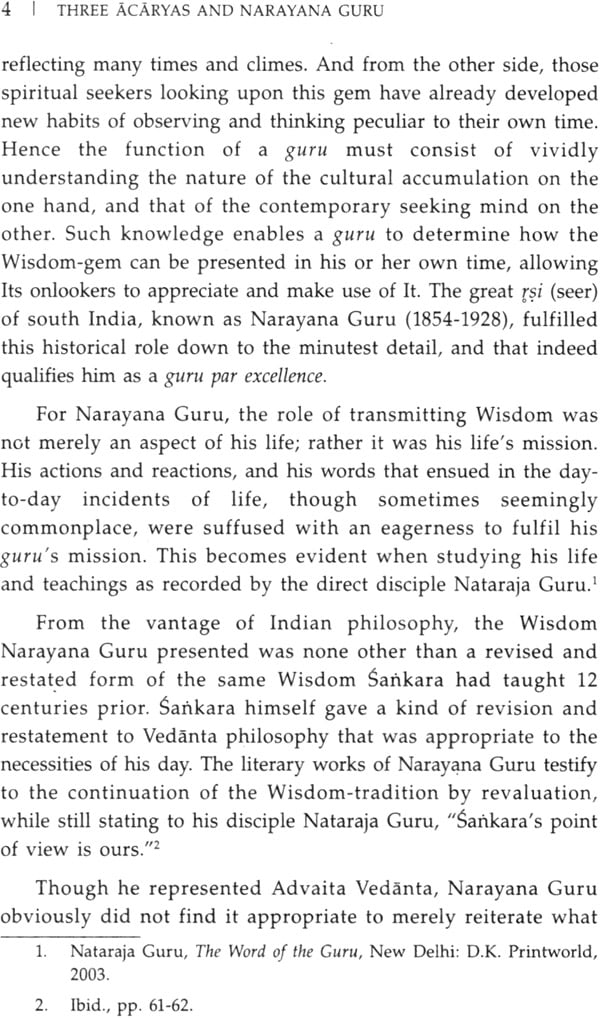











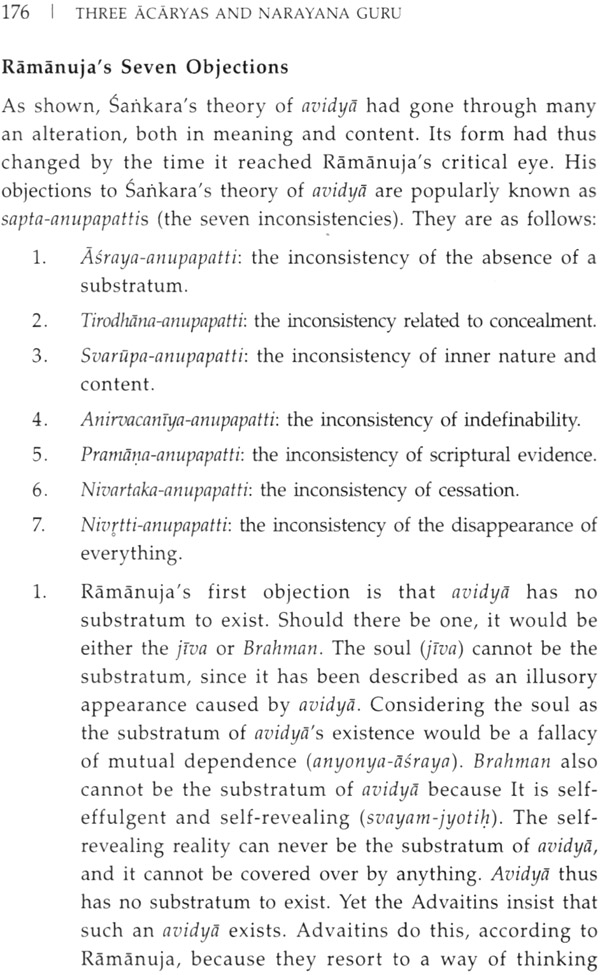






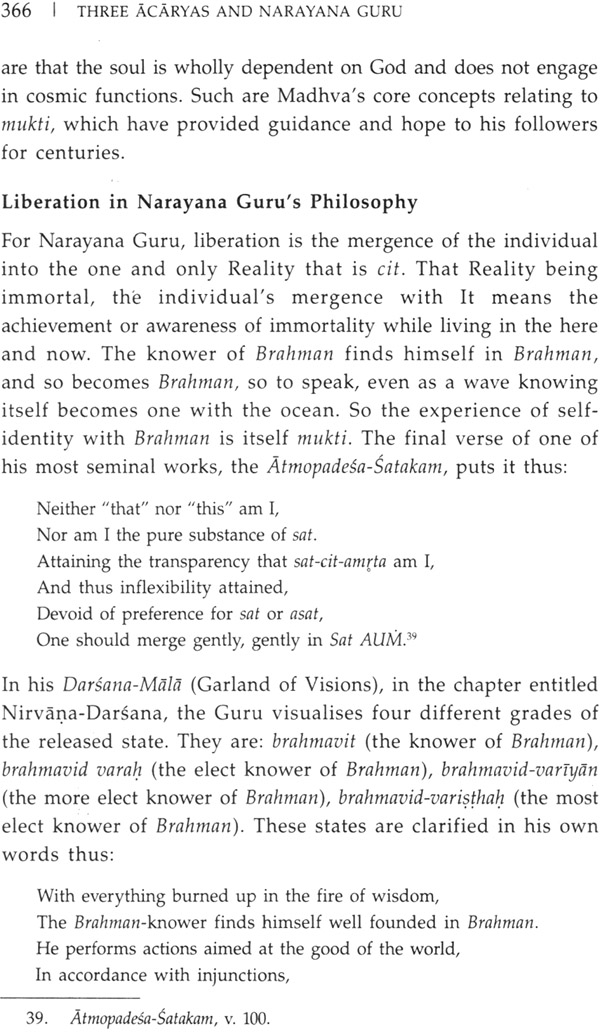

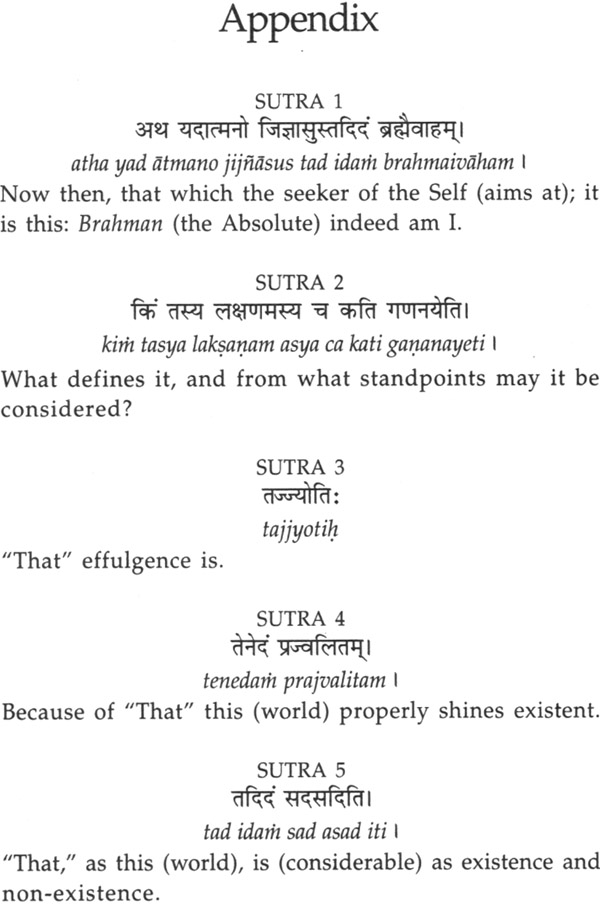







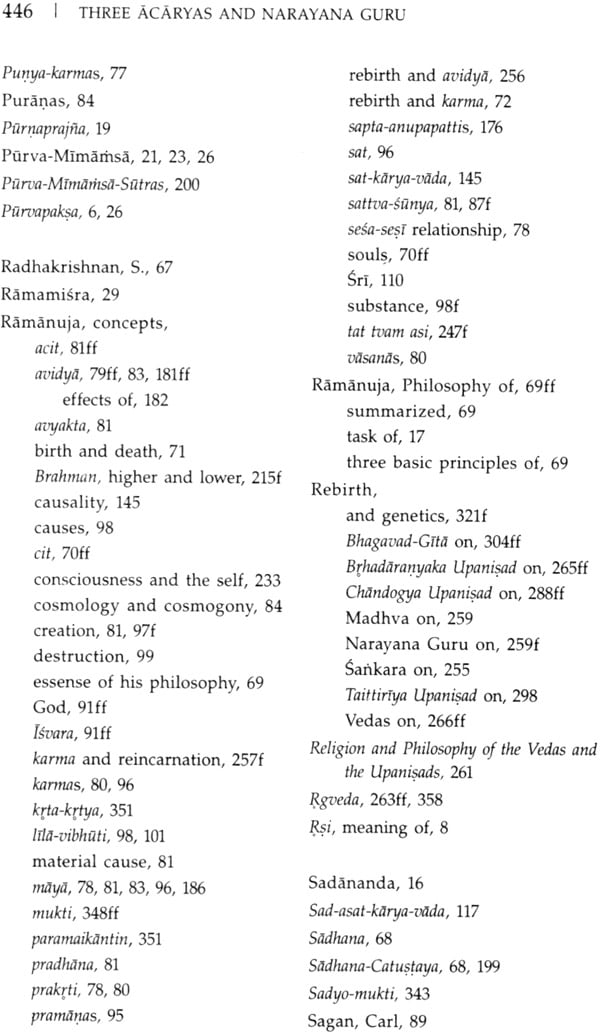

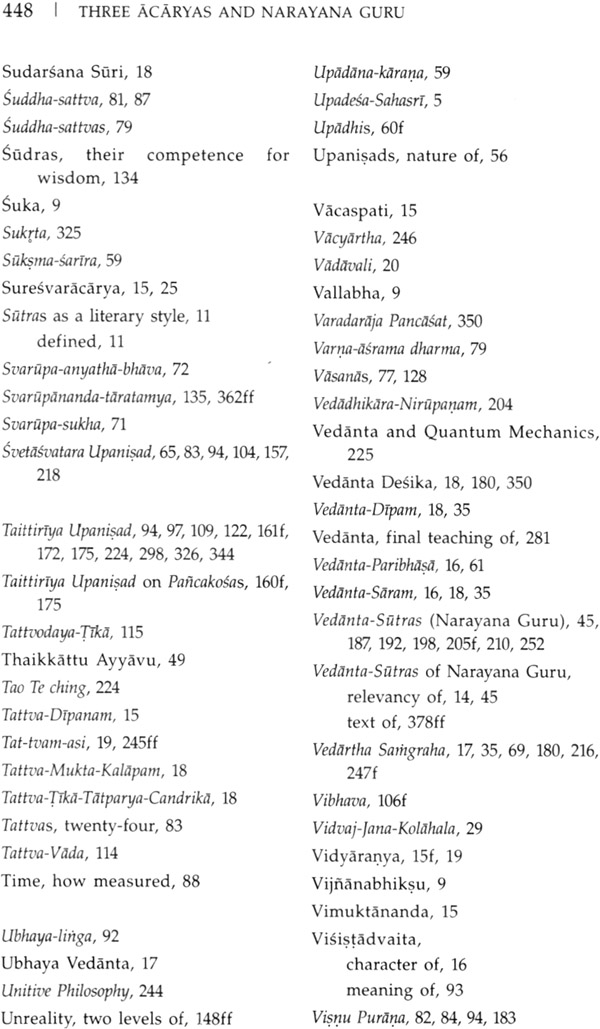


Send as free online greeting card

Visual Search